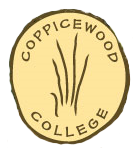Pengelli Forest lies six miles south of Cardigan and is the home of Coppicewood College, a small educational charity dedicated to the promotion of traditional woodland management through coppicing and the use of hand tools.
The wood is owned and managed by the Wildlife Trust of South and West Wales and covers 160 acres. It is a SSSI, NNR and part of the north Pembrokeshire woodlands SAC. It is also part of the largest block of ancient oak woodland in west Wales.
The woodland can be broadly divided into two sections. Adjacent to the entrance is Pant-Teg Wood, the steep slopes supporting woodland dominated by sessile oak and birch regrown from clear-felling during 1914-1930. Dense canopy shade has inhibited the understorey growth of hazel and holly. The ground flora is characteristic of acid sessile oak woodland with wavy hair-grass, common cow wheat and bilberry, with numerous moss species. Three trees of the native wild crab apple are present and valley bottoms support alder and willow.
The main body of Pengelli Forest with its gently undulating topography and many small streams has developed on poorly drained boulder clay soils. The woodland – owned and described in detail in Elizabethan times by the noted Pembrokeshire historian George Owen- was once very important to the local economy as a source of timber, and was grazed by livestock that were confined within a bank and ditch. The canopy comprises a mixture of birch, ash and alder with a wide range of hybrid oaks. Over much of the site there is a dense understorey of bramble, hazel, honeysuckle, hawthorn and holly. This is the only known location for the midland hawthorn in Pembrokeshire and aspen, goat willow, wild cherry, wych elm and apple are also to be found.
The varied ground flora includes wood millet, wood sedge, moschatel, wood anemone, violets and golden saxifrage. Adder’s tongue fern, early dog-violet and water avens also occur.
Among the rich diversity of mammals are badgers, polecats, woodmice and bank voles. Dormice, though seldom seen, leave the remains of hazel nuts with the characteristic teeth marks. The rare barbastelle bat is one of eight species of bat which roost and forage in the woodland. Frogs and newts breed in the wetter areas while common lizard and slow worm may also be found.
Interesting invertebrates include the oil beetle, dark and speckled bush crickets, and woodland butterflies including the white letter and purple hairstreaks, and silver-washed fritillary.
Under a management agreement with the Wildlife Trust, Coppicewood college is undertaking the regeneration of parts of the wood. Much of this will be carried out by staff and students involved with the annual 6-month woodland skills course and the rest by volunteers.
The sound of a chainsaw is rarely heard in the wood. Visitors often remark about the pleasant and relaxing atmosphere as students and volunteers go about their business. We put this down to the absence of noise pollution, usually caused by modern machinery, which in turn, encourages people to interact with each other as they work.
